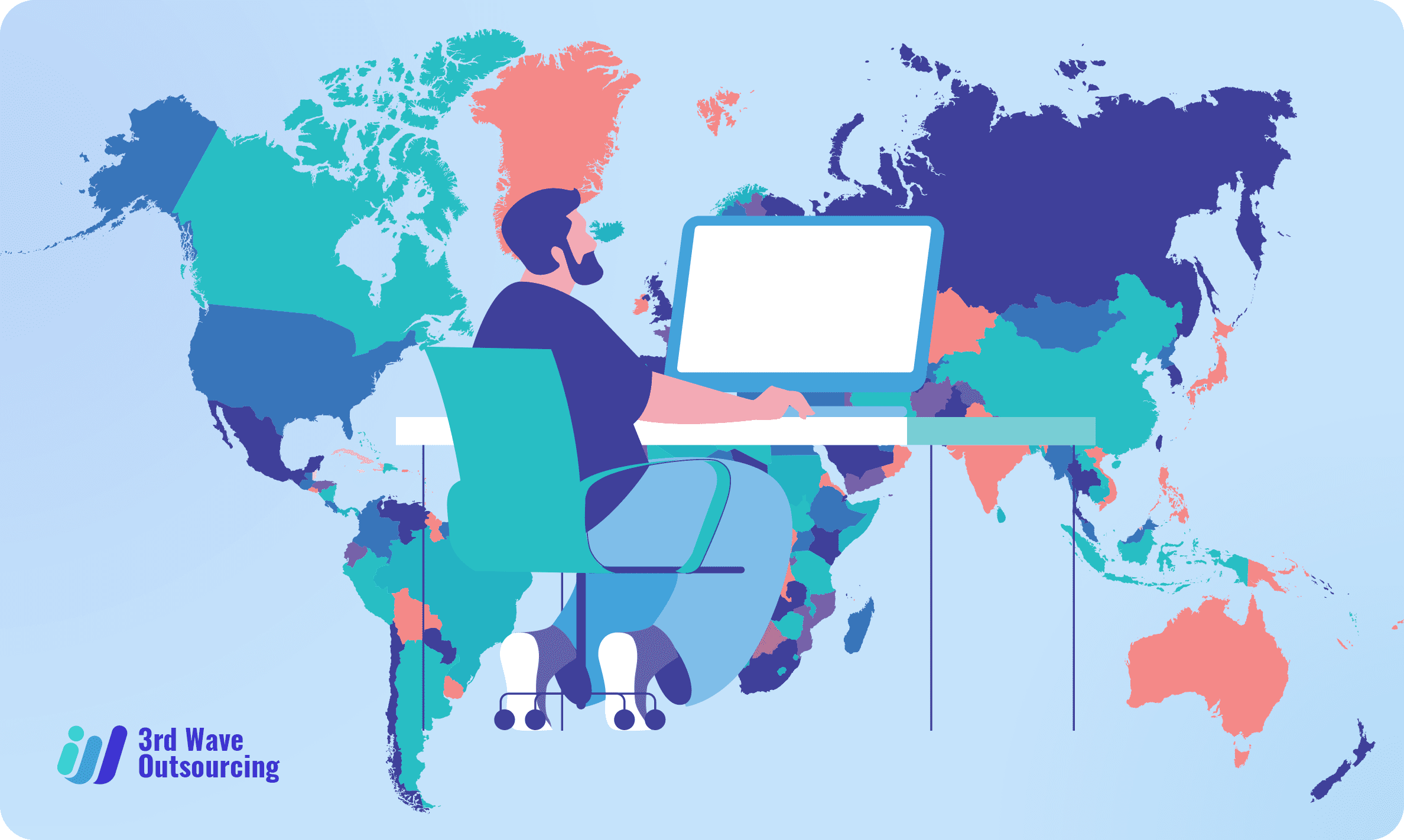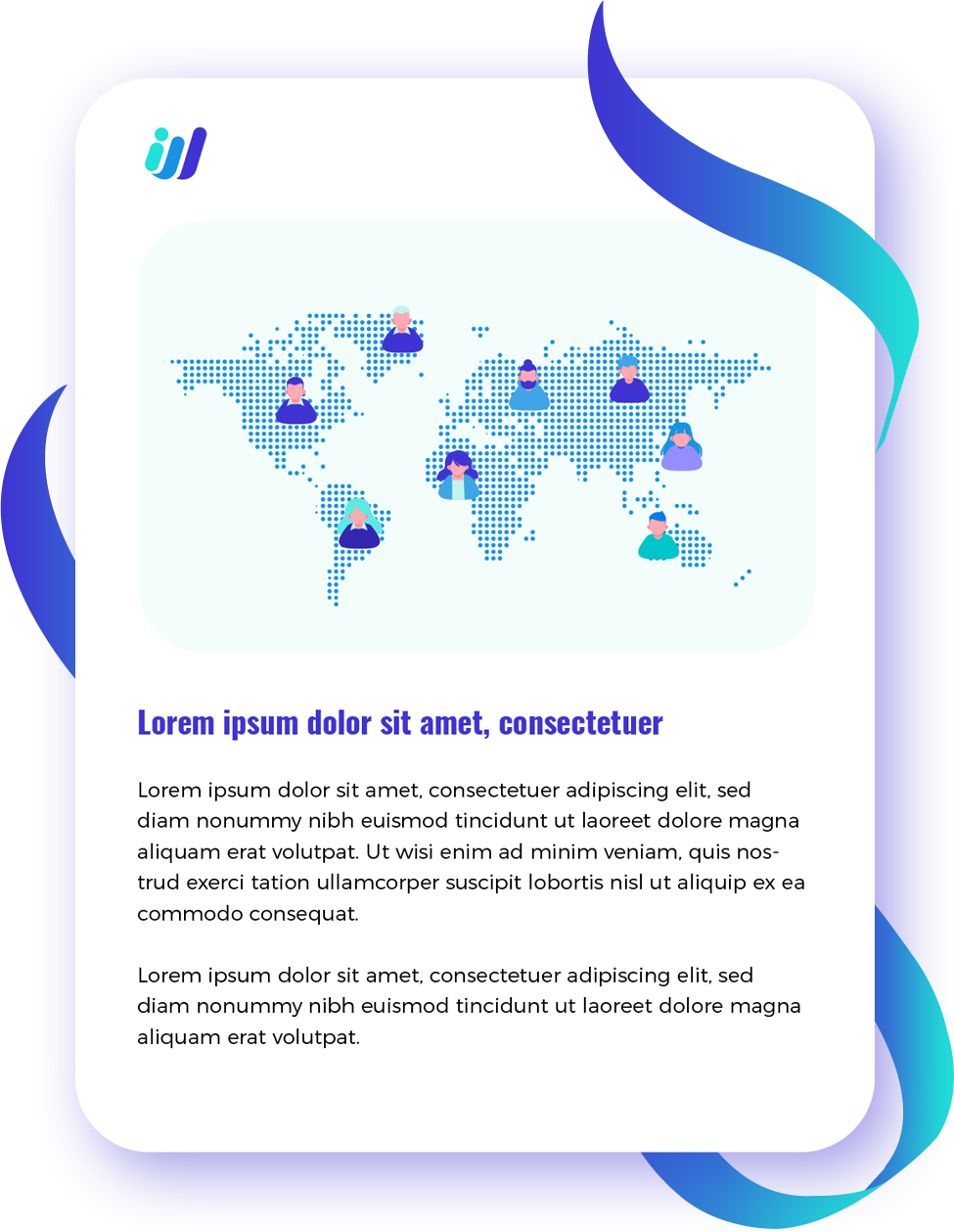The global business process outsourcing market was valued at $245.91 billion in 2021, according to Grand View Research.
During 2028, its revenue is projected to reach $435.89 billion with a CAGR of 8.5%. Outsourcing is clearly a megatrend that isn’t going away any time soon.
In addition, eight out of ten small businesses plan to outsource in 2021, according to Clutch.io.
In addition to saving time, they wanted access to global experts.
Let’s look at the trends that will shape outsourcing’s future based on these great figures.
1. Top talent will be difficult to attract and retain
4.5 million U.S. employees left their jobs willingly in November 2021, according to the Bureau of Labor Statistics. The latest figures recorded an all-time high, prompting many to refer to the movement as “The Great Resignation”.
Employees from a variety of industries have reevaluated how they view their jobs since the outbreak of the pandemic. As a result of economic pressures, quarantine measures, and health concerns, workers have been shifting their priorities.
Many countries may see their way of life return to normal. Nevertheless, The Great Resignation is likely to impact the global workforce market.
It’s true that businesses can access top talent around the world through business process outsourcing. Currently, workers are spoiled for choice. The outlook may remain unchanged for some time to come.
Outsourcing businesses will compete with other local companies for top talent in such a hot labor market. In addition, they will compete with any company that offers flexible or remote work options around the world. These days, many companies are willing to accommodate prospective employees’ demands.
2. In the future, outsourcing will be more focused on security
During the pandemic, cyber-attacks increased by 600% according to Purplesec’s 2021 Cyber Security Statistics. According to Statista research, cyber-attacks increased following the pandemic, including data leaks, phishing emails, and account takeovers.
As technology advances, these attacks become even more diverse and creative. These have the potential to shake the outsourcing industry.
Consequently, cybersecurity is likely to remain a priority beyond 2022.
Many BPO companies will adopt a multi-level security approach. By doing so, they can eliminate risks and protect their data at the same time.
In order to meet expanding cybersecurity demands, the IT industry will feel a sense of urgency.
3. Remote work will continue to grow
Outsourcers will have been doing widespread remote work for over two years by the end of 2022. As an example, consider Alorica. Among its clients are AT&T and Verizon, two Fortune 500 companies.
Following the pandemic, 90% of its clients adopted a work-from-home strategy. As a result, the company began providing tools for its agents to work remotely. Initially, 76% of its employees were fully equipped in the U.S. and Europe, 61% in Latin America, and 20% in the Philippines. Its swift action enabled 100% of its employees to work from home around the world.
With more and more companies adopting remote work setups, flexible job opportunities will grow. In addition, millions of people prefer to work remotely in some capacity. Therefore, offering WFH opportunities will definitely be a winning factor when it comes to attracting top talent.
- There are 6 out of 10 U.S. workers who can do their jobs remotely
- 94% of newly remote workers plan to stay in this arrangement for the rest of their careers
Buffer’s 2021 State of Remote Work found that 94% of people who worked remotely due to the pandemic intended to continue doing so. Most companies, however, are insistent on returning to full-time in-office operations. However, outsourcing will likely have some flexible work arrangements in the future.
4. The demand for cloud-based technology is increasing
Before the pandemic, 59% of call centers around the globe allowed some of their employees to work from home, according to Nemertes Research. When lockdowns were imposed, this figure rose to 74.1%. However, 70.7% continued to allow remote work after the restrictions were lifted.
According to a FlexJobs survey, only 39% of respondents prefer a hybrid work environment. Additionally, 58% want to work remotely at all times. The majority of outsourced contact center employees will likely look for jobs with flexible working conditions. Companies providing manpower will, of course, make adjustments in the future as necessary.
In order to support the growing number of BPO call centers working with fully remote teams, cloud-based solutions are essential. The 2020 Business Insights Report predicts that the global cloud market will reach $390.33 billion in 2028. According to a recent Gartner press release, organizations will largely adopt cloud-based customer experience solutions.
A Deloitte survey found that 57% of companies have already migrated their customer relationship management functions to the cloud. During the pandemic, cloud-based tools like time tracking apps continued to grow. In 2020, its global market size is estimated at $121.56 million. By 2026, it is expected to reach $191.51 million with a 7.86% CAGR.
5. There will be an increase in global outsourcing
Due to the ongoing war for top talent, technological advancements, and remote work growth, outsourcing will expand globally in the future. The Philippines and India are typically outsourcing hubs, but the industry is exploring other locations as well.
Business process outsourcing was promoted in the region by South African politicians and industry leaders in 2021, for example. Colombia, Bulgaria, Poland, and Romania will access global talent migration to address the workforce shortage.
Inside Outsourcing predicts these countries will continue to expand their BPO industries:
- The African Continental Free Trade Area (AfCFTA) agreement will provide Nigeria with new opportunities from outsourcers.
- An outsourcing roadmap has been developed by Uganda’s Business Processing Outsourcing (BPO) and Innovation Council.
- Within the next ten years, Fiji plans to create 100,000 BPO jobs.
- A 2,000-person BPO facility will be built in Jamaica with a floor area of 108,000 square feet (about the area of a Manhattan city block).
- Teleperformance’s Guyana hub will expand to accommodate an additional 1,500 employees.
6. Jobs will not be completely replaced by AI and automation
Artificial intelligence (AI) will play a major role in outsourcing in the future. This breakthrough technology is capable of reducing costs, providing control, and promoting efficiency. In outsourced call centers, which rely on speed and accuracy, AI will have a significant impact.
Contact centers have been using automation and artificial intelligence for years. However, they were heavily adopted due to strict lockdowns. Automated online interactions and chatbots were essential when call centers were forced to operate remotely or with a skeleton workforce.
Despite how dark it may sound, there is data supporting the takeover of certain jobs that require human intelligence by machines. In spite of this, it is unlikely that the outsourcing industry can be completely automated.
Outsourced tasks: How Automatable Are They?
Over 2,000 work activities were analyzed for over 800 occupations in a McKinsey study. This research examined the technical feasibility of automating these tasks. Results showed that predictable physical work, data processing, and data collection can be automated. While physical work, stakeholder interactions, and expertise-intensive tasks are less susceptible to automation, unpredictable physical work is more likely to be automated.
7. There will be major mergers and acquisitions
One of the biggest news stories in the outsourcing industry in 2021 was Sitel’s $2.2-billion acquisition of Sykes. As a result of Sykes’ multi-channeled demand generation and full cycle CX management, Sitel became one of the top three CX leaders in the world.
Across 40 countries, the newly combined company employs 16,000 people. It has contracts with over 700 customers in over 50 languages. It is therefore expected to generate $4.3 billion in revenue in 2021.
The outsourcing industry will find this kind of revenue attractive, of course. Organizations in the top spots may need to reevaluate their operations. They may view mergers and acquisitions as opportunities to fill potential service gaps. The move will also generate a larger revenue stream for these companies.
Even with the challenges of the pandemic, similar mergers and acquisitions are highly feasible. A study conducted by Capstone Partners supports this claim. Mergers and acquisitions among BPOs and contact centers remained resilient throughout 2020, according to the report.
27 deals were announced or closed in the industry amid companies switching to remote operations. During Q4, it accounted for 40% of 2020’s transactions. As in the previous year, mergers and acquisitions continued to be strong in 2021. A large number of finance companies, insurance companies, and law firms have turned to specialized outsourced services.
Conclusion
The future of outsourcing is undeniably bright. A few years ago, companies outsourced non-core tasks to other countries. With advances in technology, BPO companies are able to handle more complex business processes. To attract top talent, you need to invest in the right tools for remote work and consider flexible work arrangements.
When done right, outsourcing sparks startup success, increases the chance for thriving, and clears the path toward sustainable and guaranteed growth. Let us help you find top talents in IT, technical support, digital marketing, and cloud services so you can leverage all the benefits of outsourcing in the new normal. Request a FREE copy of the e-book on Third Wave Outsourcing .



